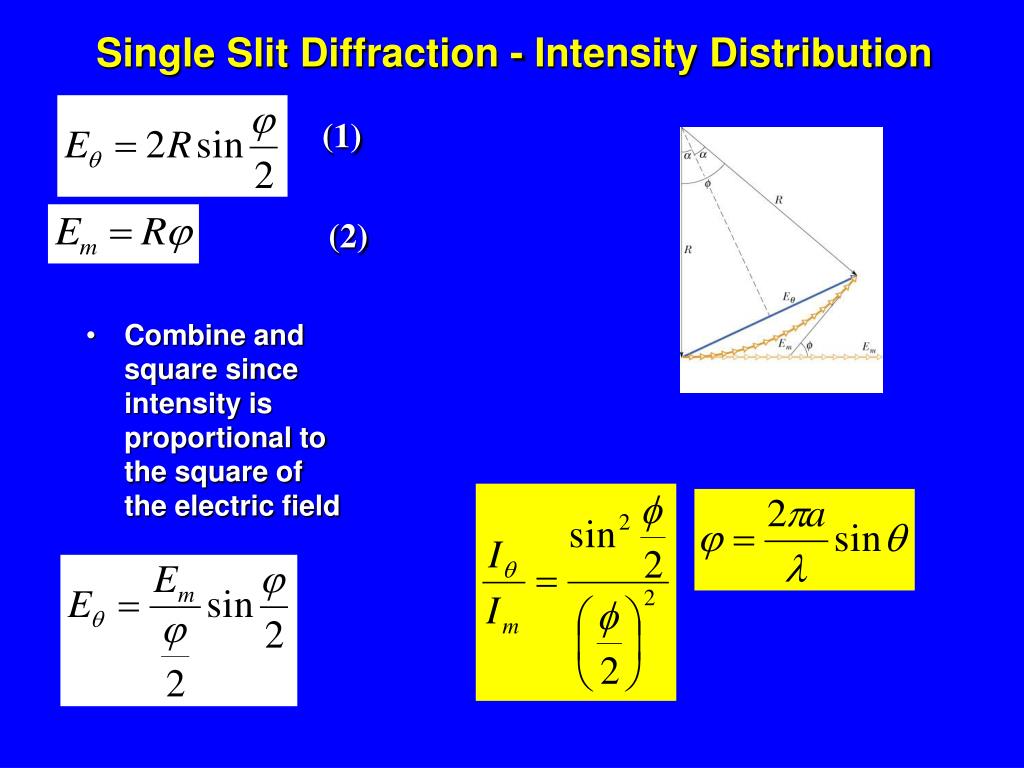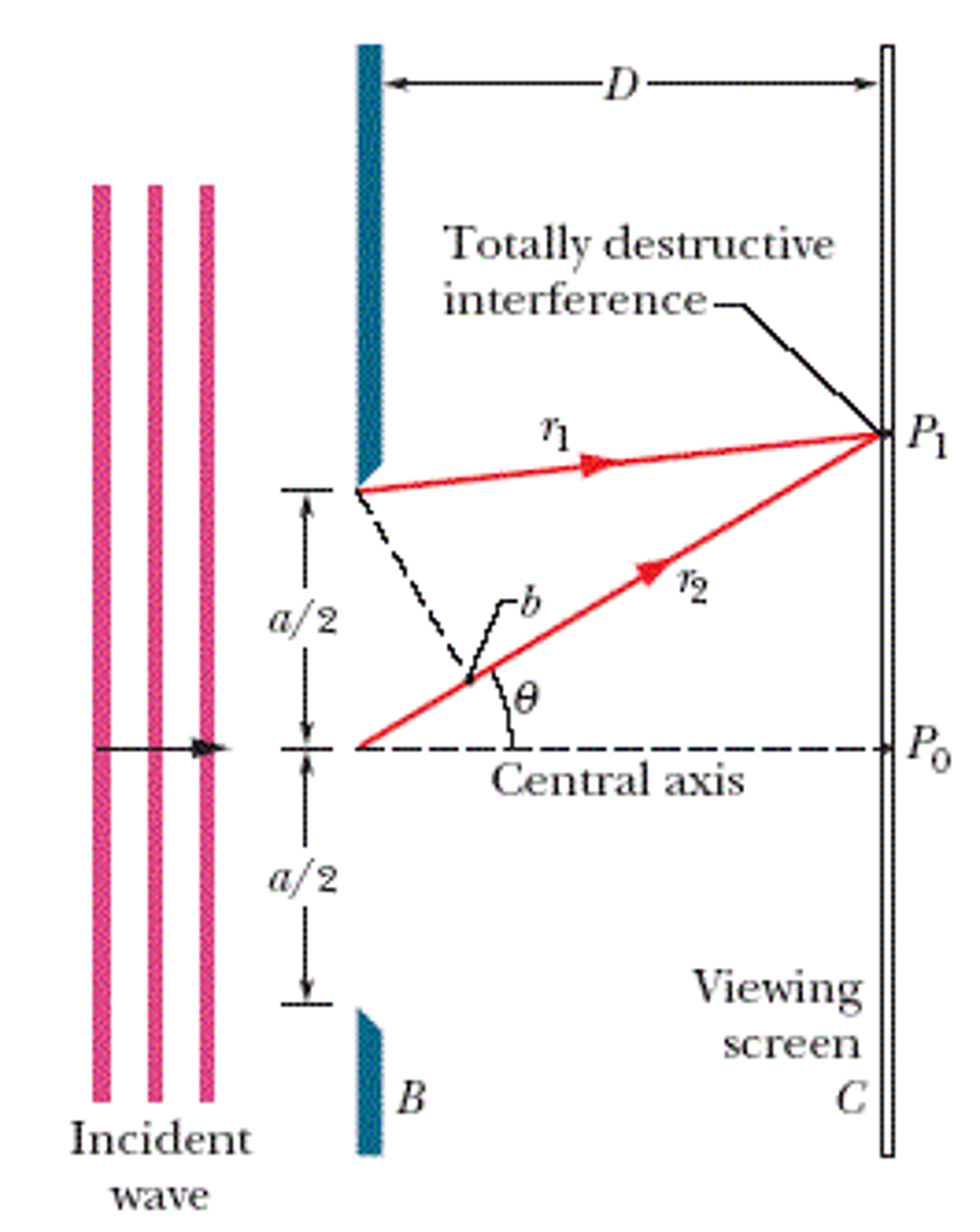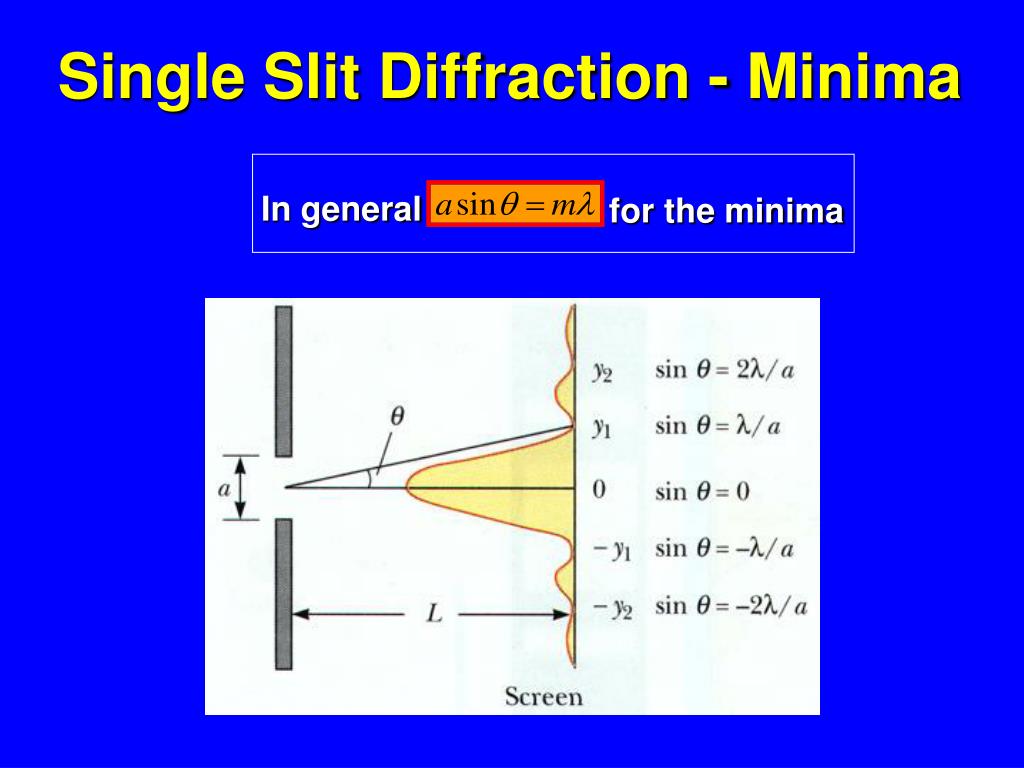

(The upper patter in the preceding photo.)

In red, the calculated combined inter ference pattern due to two slits of width a and centre-centre separation d = 3a. (The lower pattern in the preceding photo) In black: the calculated diffraction pattern due to a single slit of width a. I 0 for the intensity at the centre of the pattern, we have So the magnitude of the phasor sum isĪs we've seen in several previous chapters, the intensity I is proportional to square of the amplitude A.

By the definition of angle, 2 α = A 0/ R, which gives us R = A 0/2 α. This is the amplitude of the diffraction patter at θ /= 0, which we call A 0. On the axis, where the phasors are all in phase, the phasor sum is the straight line shown in red at right. The phasor sum has magnitude A, which we can write as R.sin α, where R is the radius of the arc formed by the phasor sum. Now 2 α is also the phase difference between the first and the last phasor, which is 2π a sin θ/ λ. We'll call the angle that this subtends 2 α. For a large number of slices, the phasors approximate the arc of a circle, as shown in red. The slices of the slit all have equal width and length, so the lengths of all the phasors are equal. The path difference between rays from successive slices of the slit are equal, and so too are the angles between successive phasors. The slit of width a is divided into N slits, each of width δa. The arc made of very many phasors has the same length as the central amplitude A 0. Next we calculate how the intensity varies with sin θ. We can note too that, for light diffracting the throught slits, the slit is usually much wider than a wavelength, so the pattern is usually very small, so the approximation that sin θ = θ is usually good. Remember that, on the axis where θ = 0, there is a minimum, so the minima are equally spaced in sin θ, except either side of the central maximum. So this diagram represents the second order minima, where sin θ = λ/ (a/2), or sin θ = 2λ/ a. Similarly, sources in the third quarter are nullified by those in the fourth quarter. Each half is divided into quarters, and light from a source in the first quarter cancels that from one in the second quarter. These two minima limit the broad central maximum.Īn argument like the one applies if, in our imagination, we divide the slit into any even number of equal slices. On the other side of the axis of symmetry, sin θ = –λ/ a is also a minimum. Now, for every point in the top half of the slit, there is one in the bottom half a distance a/2 below and, at the angle that satisfies a sin θ = λ, If this distance is half a wavelength, i.e. The ray from the distance a/2 below has to travel an extra distance ( a sin θ/2). Typically in diffraction experiments, the slit is ~ 10 µm wide, while the distance to the screen might be ~ 1 m.) (Why parallel? Because the screen is distant. Consider parallel rays from both points, at angle θ to the axis of symmetry. a point at the very top of the lower half of the slit. Using the Huygens' construction, we consider a point at the very top of the slit, and another point a distance a/2 below it, i.e.

We call the slit width a, and we imagine it divided into two equal halves. This animated sketch shows the angle of the first order minima: the first minimum on either side of the central maximum.


 0 kommentar(er)
0 kommentar(er)
